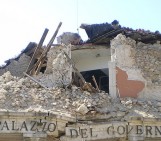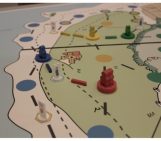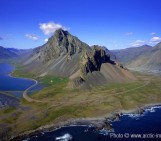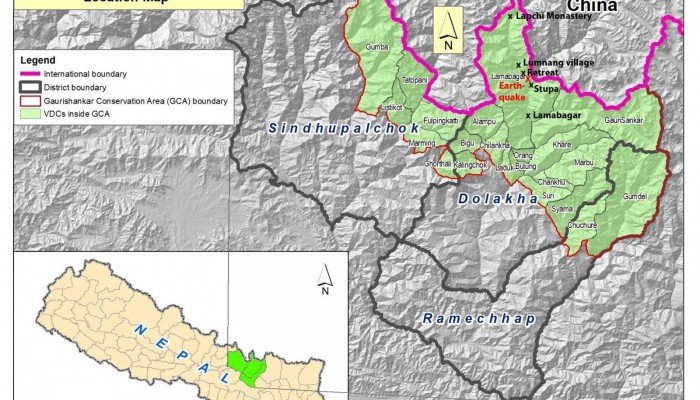
On the 25th April 2015, Viktor Bruckman, a researcher at the Austrian Academy of Sciences, and a team of his colleagues were a few hours into a hike between the settlements of Lamabagar, in a remote area of northeastern Nepal, and the Lapchi Monastery when a magnitude 7.8 earthquake struck Nepal. Their journey cut short by the trembling Earth, stranded in the heights of the Himalayas, this is their personal experience of the Gorkha earthquake, summarised by EGU Communications Officer Laura Roberts.
Researching land use in Nepal
Bruckman is part of an international team of researchers, from Austria, Nepal and China, studying the land use and forest resource management in the densely wooded and remote Gaurishankar Conservation Area, in eastern Nepal. Bruckman and his team want to better understand how the local communities are linked to the resources in the area and how their daily life has been affected since the introduction of the Conservation Area. Their research project also aims to explore how the ongoing building of the largest hydropower plant in Nepal: the Upper Tamakoshi Hydropower Project (UTHP) might disrupt the local populations.
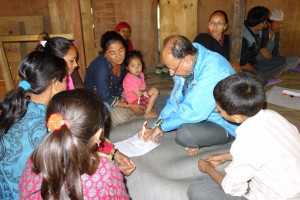
The team conducted a set of semi-structured interviews to assess land management practices and the impact of new management policies since the Gaurishankar Conservation Area was set up in 2010 (Credit: Dr. Viktor Bruckman).
To answer these questions, Bruckman and his colleagues travelled to Nepal in April to participate in workshops with government and institutional bodies based in Kathmandu, as well as visiting local communities deep within the Gaurishankar Conservation Area to conduct face-to-face interviews.
Beyond the hydropower construction site there are no roads, meaning the team had to hike across the rugged Himalayas to reach the residents of the most remote settlements and the target location for setting up monitoring plots. Their planned route would take them 25 km from Lamabagar, at 2000 m above sea level, reaching Lapchi Monastery, close to the Tibetan border, two days later having climbed to an altitude of 3800 m.
The hike
On the morning of the 25th April, a team composed of Bruckman, his Nepalese colleague Prof. Devkota, Devkota’s student Puskar and Prof. Katzensteiner from the University of Natural Resources and Life Sciences Vienna (BOKU), set off on the trek to Lapchi. They were accompanied, albeit a little later following breakfast, by three porters who carried the bulk of their scientific equipment, some food and other ‘home comforts’ such as sleeping bags and mattresses. Given the physical effort the trek would involve, many of the food supplies were delivered to Lapchi via helicopter, a few days in advance – local porters would meet the team at settlements downstream of the monastery and deliver the provisions over the course of the next few days.
Despite the constant drizzle and strains of the climb, the entire team was stuck by the beauty of the surroundings: steep cliffs of metamorphosed sedimentary series (Tethys Himalaya within the Central Himalayan Domain), diverse mix deciduous forests and glistening streams.
The moment everything changed
At 12:05, not long after having traversed the most challenging section of the hike thus far, walking along the Lapchi River Valley, the ground under the team’s feet started to quiver. The quiver quickly grew to a strong shake dislodging football sized rocks from the surrounding slopes. The realisation hit the researchers that they were experiencing an earthquake and their primary concern was to seek shelter from the ongoing rock fall triggered by the ground shaking.
“Large rocks, with size equal to small houses, smashed into the river breaking into smaller pieces which where flung in all directions”, describes Bruckman, who by now had found protection, alongside Prof. Devkota, behind a large tree.
A few moments later, the earthquake ended and both emerged from behind the tree unharmed.
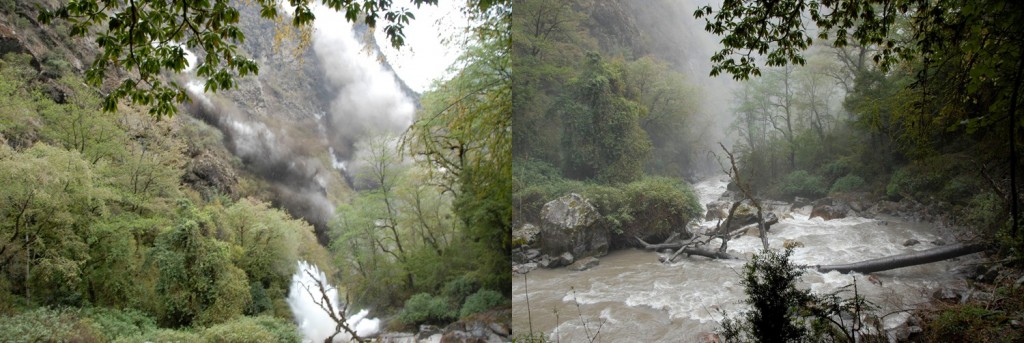
Left: Rockfall from the opposite cliffs made the researchers’ location a highly dangerous place. Right: Seconds after the main tremor was over, everything was changed. The river color turned brown, dust and Sulphur smell was in the air and the path was destroyed by small landslides or rocks (Credit: Prof. Dr. Klaus Katzensteiner).
They found Prof. Katzensteiner sheltering under a large rock overhang, but there was no sign of Puskar. The three men eyed up a large boulder which had come to rest on the path and feared the worst. Some minutes later, Puskar appeared, unharmed, along the path accompanied by a lama – a Buddhist monk – who’d encouraged the student to run up hill away from the projectiles from the river.
“The lama saved our student’s life; he was almost hit by a large rock which destroyed the water bottle attached to his backpack,” says Bruckman.
A stroke of luck
With their porters some hours trek behind them, almost no food supplies and no other equipment, and worried about potential flash floods as a result of landslides upstream, the group decided to make their way out of the valley and head back towards Lamabagar, only to find that the trail had been wiped out by a massive landslide.
The lama’s knowledge of the local terrain was invaluable as he guided the scientists to a meditation centre, where a group of about 20 lamas kindly took them in, sharing their food, offering tea and a place to sleep.
Having found a place of shelter, Bruckman and his colleagues, knowing how worried their families would be, were desperate to contact them. But amongst the high peaks of the Himalayas, in one of the most remote parts of Nepal, mobile phone signal is hard to come by. Only once, on the morning of the 26th of April, were the group successful in reaching loved ones, but it was enough: they were able to communicate they had survived, but were now trapped in the Lapchi River Valley.
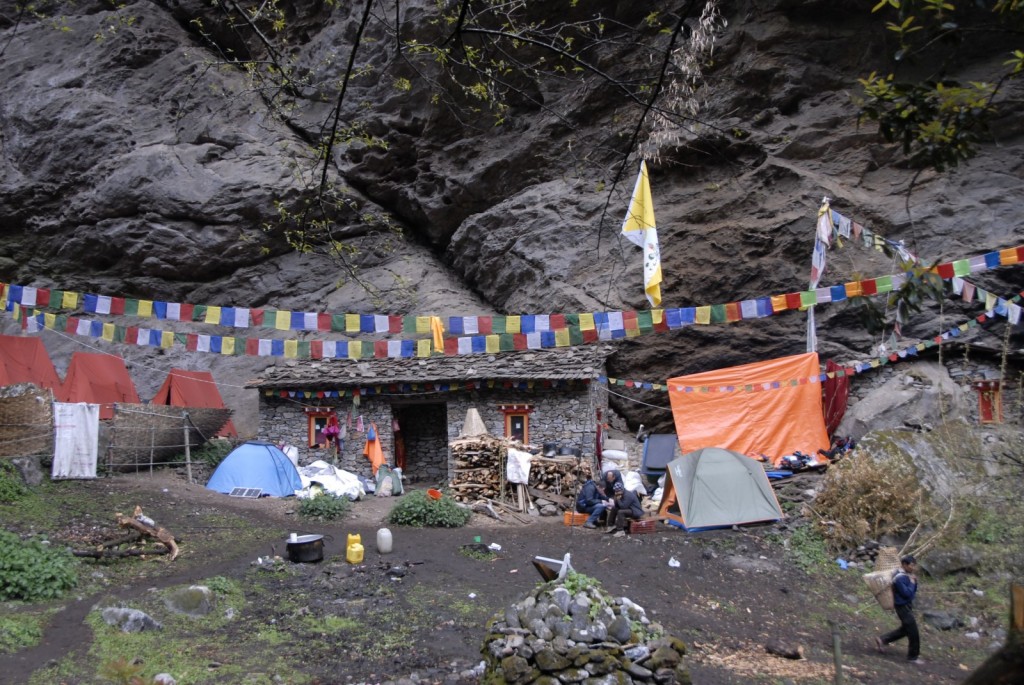
The retreat where lamas provided the scientists with food and shelter (Credit: Prof. Dr. Klaus Katzensteiner).
Back home, a rescue mission started: The scientists’ families, the officials of their institutions, their countries Foreign Ministries’, Embassies and the local military all rallied to locate and bring home the researchers. Five days after first arriving at the Buddhist meditation centre, the group was rescued by a helicopter, which took them to the safety of military camp Charikot.
Retracing their steps, this time in a helicopter, Bruckman and his colleagues realised the scale of the devastation caused by the earthquake. The first village they’d intended to reach on their hike, Lumnang, was completely destroyed. 80% of the building structures in the valley had disappeared. Landslides has wiped out large sections of the trail, meaning returning to Lamabagar would have been out of the question.
Tragedy
The team’s porters, travelling behind the researchers when the earthquake hit, were far less fortunate. Tragically, one of the team’s porters was killed by a landslide triggered by the earthquake, whilst another was seriously injured. Only one returned safely to Lamabagar. Whilst hiking, the scientists overtook several groups of people also headed towards Lapchi and a team of hydropower experts – they are all reported missing.
The region, already damaged by the April 25th earthquake, was further rocked by a powerful, magnitude 7.3, aftershock. Since then, Bruckman and his colleagues have been unable to reach their contacts in Lamabagar. Reports indicate that hardly any structures were left standing in the village.
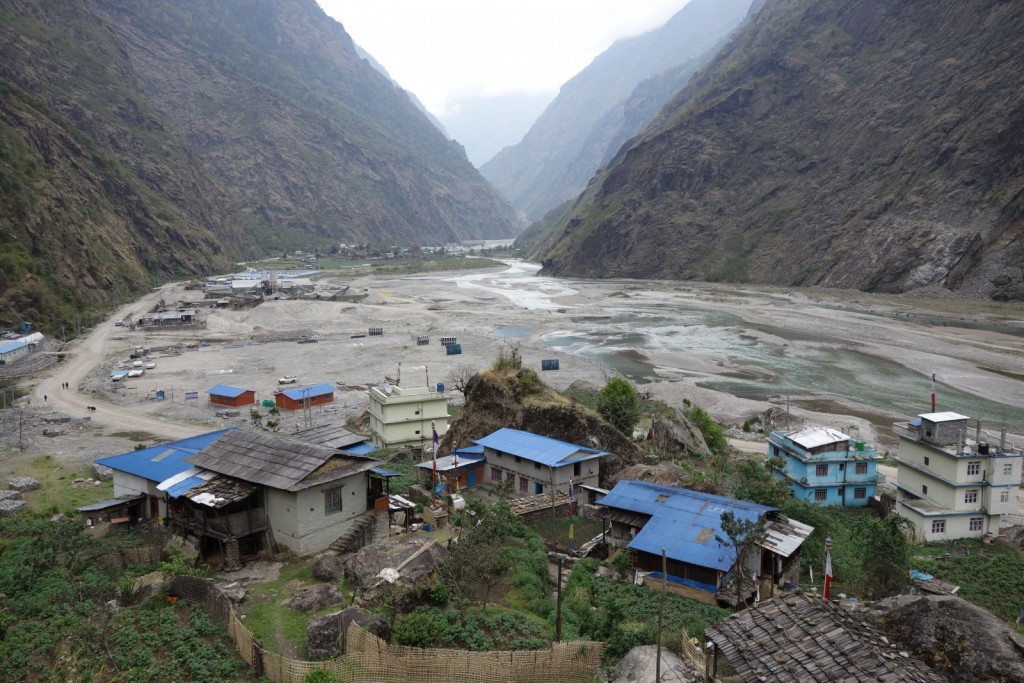
A view of Lamabagar prior to the earthquakes. At 2000m a.s.l., the village lies on the flat riverbed of the Upper Tamakoshi River, which developed as a consequence of a massive landslide (probably earthquake-induced) in the past (Credit: Dr. Viktor Bruckman).
The future
Following the earthquake, the scientists realise that the original research aims are no longer valid and “we would probably not meet the communities’ needs if we stick to the original ideas”, explains Bruckman.
Therefore, the plan is to carefully assess the regions current situation and develop a new research proposal which will focus on supporting the remote villages on a long-term and sustainable basis. In the event of any future field work in the region, the scientist will ensure they carry, at the very least, an Emergency Position Indicating Radio Beacon (EPIRB), if not a satellite phone.
Science aside, their experience in the Nepal means the scientists were deeply touched by the kindness extended to them by the lamas and now seek to support the communities affected by the earthquakes. In particular they want to raise funds for the families of the porters who passed away and were injured while transporting their supplies.
By Laura Roberts, EGU Communications Officer
A message from Bruckman and his colleagues
Please help us support the affected families.
For the purpose of collecting donations, we opened an account at the University of Natural Resources and Life Sciences Vienna (BOKU). Funds will be collected in a transparent manner and directly used for supporting the porter’s families and the villagers of Lumnang, who have lost everything and they will most likely not receive help from other sources soon. We will facilitate support through the trustworthy Nepalese project partners (including full documentation) and the Lamas of Lapchi monastery and from the retreat where we were able to stay. Please help us to support this remote region; even a small contribution is very much appreciated. Our direct contacts ensure that 100% of the donations reach the target group.
Here are the account details for wire transfer:
Recipient: Universität für Bodenkultur Wien, Spenden IBAN: AT48 3200 0018 0050 0512 BIC: RLNWATWWXXX Payment reference: 7912000003
Payments via Credit Card are also possible (Master Card and Visa). Should you wish to pay per credit card, please send an e-mail containing your name, address, card number, expiry date and security code (3-digits) to c.hofer@boku.ac.at.
We thank you very much for your contribution!
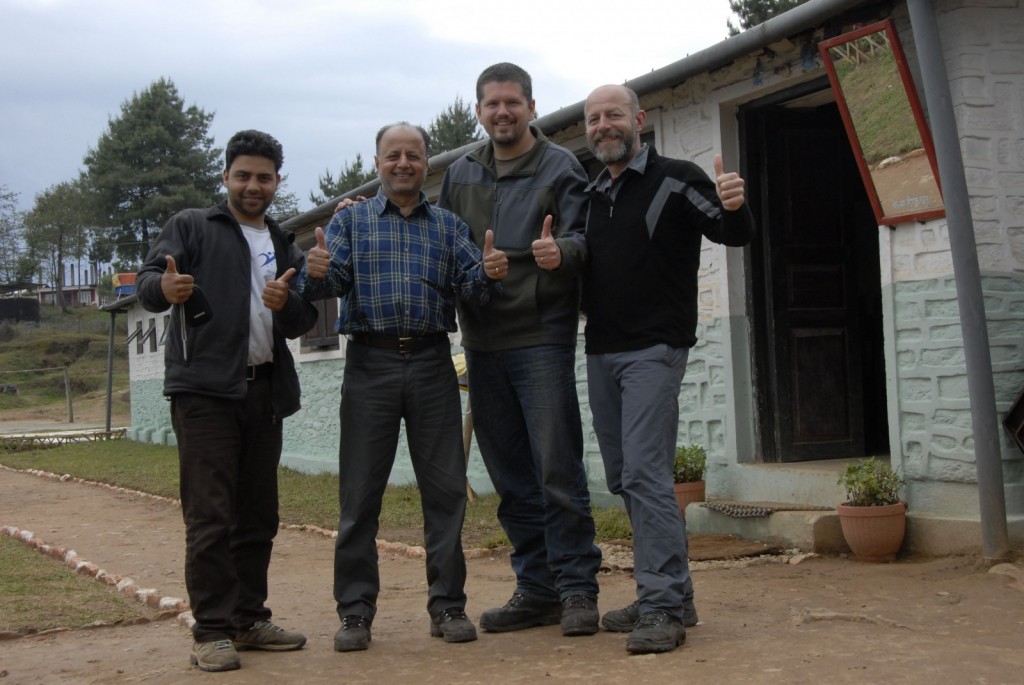
The team after their ordeal. They extend their deepest condolences to the family of the porter who lost his life during the expedition. (Credit: Prof. Dr. Klaus Katzensteiner).
This blog post is a summary of: How a geophysical extreme event dramatically changed fieldwork plans – a personal account of the Gorkha Earthquake, originally posted on the EGU’s Energy, Resources and the Environment Division Blog.
For more information about the 2015 April and May earthquakes, please see the links provided in the original blog post. You can also access more information via this information briefing issued by the EGU.

